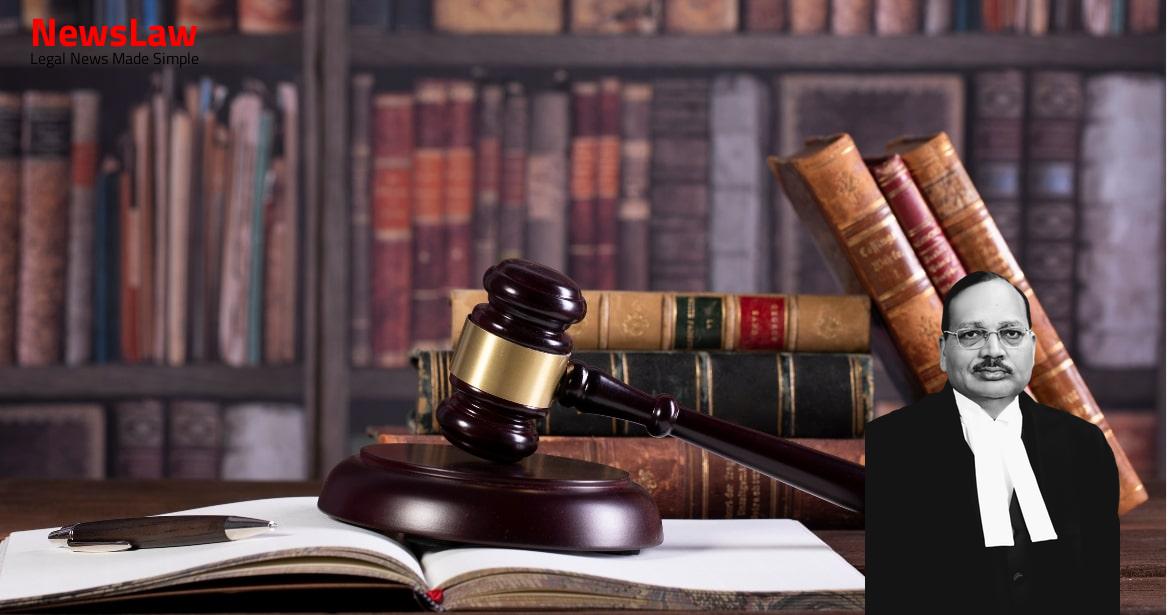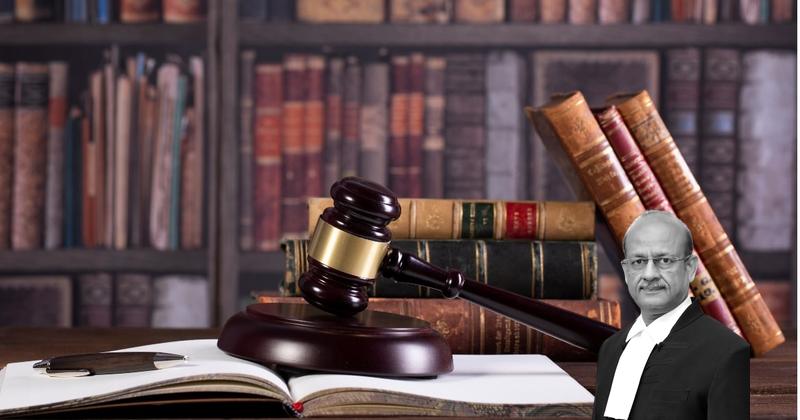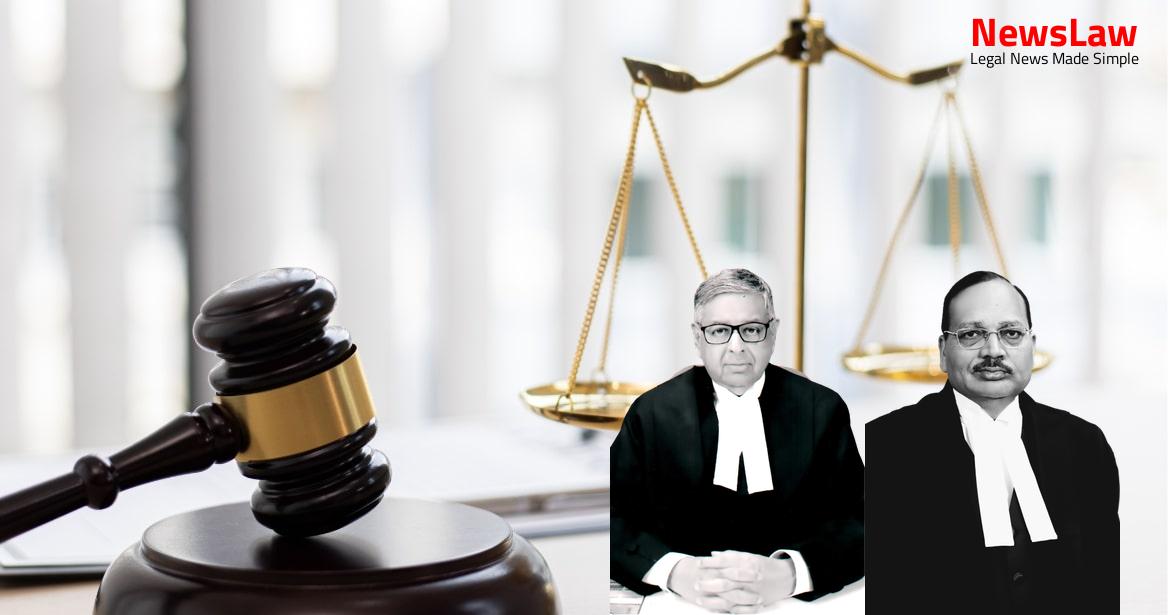In a recent criminal case, the court undertook a detailed examination of a dying declaration, weighing its significance in light of various legal considerations. This summary focuses on the court’s legal analysis and the complexities surrounding the admissibility and reliability of such crucial evidence.
Facts
- The prosecution failed to discharge its onus and the appellants were acquitted.
- The High Court emphasized the testimonies of PW-11 and PW-16 corroborating the dying declaration.
- The trial Court noted that the sole material to connect the accused with the murder was the dying declaration (Ex.P5).
- The High Court found no reason to disbelieve the testimonies or the dying declaration and convicted the appellants.
- The appellants appealed against their conviction and sentence under Section 302 read with Section 34 IPC.
- The High Court considered the dying declaration evidence conclusive and reversed the trial Court’s findings.
- Mitigating circumstances like hostile witness testimonies and nature of burn injuries led the trial Court to doubt the genuineness of Ex.P5.
- The testimonies of PW-11 and PW-16 were deemed vague and unsatisfactory by the trial Court.
- The High Court judgment dated 29.07.2008 reversed the trial Court’s findings and convicted the appellants under Section 302 read with Section 34 of IPC, sentencing them to life imprisonment.
- After a heated exchange of words, the appellants allegedly doused the deceased Jayamma in kerosene and set her on fire.
- Material witnesses supporting the prosecution were PW-11 (K.V. Mallikarjunappa) and PW-16 (Dr. A. Thippeswamy).
- Police visited the spot, drew the mahazar, and made seizures in the presence of witnesses PW-1 and PW-15.
- Arrest of the appellants was made by PSI Chandrahas Naik (PW-13) and CPI Shankar (PW-18).
- The deceased was shifted to the hospital by PW-2 with the help of Kumaranaika (PW-3) where she later succumbed to her injuries.
- Post mortem report concluded that Jayamma died of shock due to extensive burn injuries.
- Contradictory statements from witnesses PW-1, PW-15, and several other prosecution witnesses were noted during the trial.
- Charges were framed against the appellants under relevant sections of the IPC.
- Police requisitioned to alter the offence under Section 307 to Section 302 IPC after the death of Jayamma.
- Inquest conducted by ASI J. Sanjeeva Murthy (PW-14) after Jayamma’s demise.
- Crime registered under different sections based on the statement of the injured Jayamma (Ex. P-5).
Also Read: Analysis of Suppression of Information in Employment Selection: Legal Perspective
Arguments
- High Court failed to evaluate the entire evidence and specific findings of the trial Court as required under Section 378 CrPC.
- Lack of corroboration for purported dying declaration Ex. P-5 to be the sole basis for conviction.
- Citing Surinder Kumar v. State of Haryana, it was argued that doubtful circumstances surrounding Ex. P-5 precluded it from being the sole basis for conviction without corroboration.
- High Court, when interfering with an order of acquittal, should provide a detailed finding on why it was impossible to sustain the trial Court’s decision or why interference was necessary.
- Reference to Paparambaka Rosamma & Ors v. State of A.P. for the necessity of a medical certificate on mental fitness before relying on a dying declaration like Ex. P-5.
- State Counsel supported the conviction awarded by the High Court.
- High Court overlooked the fact that the prosecution failed to establish any motive in the present case.
- Conviction of the appellants was deemed untenable due to lack of motive.
- High Court’s judgment was well-reasoned and supported with specific reasons.
- Reference to Vijay Pal v. State (Government of NCT of Delhi) to support reliance on dying declaration in cases of burn injuries.
Also Read: Analysis of Cheating and Forgery in Passport Case
Analysis
- The Eighth reason for reluctance in accepting the dying declaration (Ex. P-5) is the victim’s state of mind due to highly sedative painkillers and the possibility of delusion or hallucination.
- The victim’s purported dying declaration (Ex. P-5) accuses all the accused of murder with common intention.
- Contradictions arise between the police officer (PW-11) and Dr. A. Thippeswamy (PW-16) regarding the nature of the victim’s burn injuries.
- The High Court heavily relies on the dying declaration (Ex. P-5) despite contradictions and lack of corroboration by other witnesses.
- The conduct of the parties, including the son and daughter-in-law of the deceased, raises doubts about the credibility of the dying declaration.
- The police officer failed to secure an endorsement from the doctor regarding the victim’s state of mind before recording the statement.
- The High Court’s decision to convict the appellants based solely on the dying declaration is questioned due to various inconsistencies and lack of proper procedure followed.
- The original dying declaration raises concerns about the accuracy and influence of the police officer on the victim’s statement.
- Dying declarations are crucial pieces of evidence in criminal cases, especially when the victim is unable to testify in court.
- The admissibility and reliability of a dying declaration depend on various factors such as the mental and physical condition of the victim at the time of recording.
- Contradictions between the dying declaration and other prosecution statements can raise doubts on its authenticity.
- The first dying declaration in terms of time is usually given preference if there are multiple statements.
- The veracity of a dying declaration hinges on its truthfulness and voluntariness.
- Proper recording and certification are essential for the validity of a dying declaration.
- The level of detail in a dying declaration does not necessarily determine its credibility.
- Medical opinions play a key role in assessing the mental fitness of the deceased to make a dying declaration.
- Corroboration of a dying declaration may be required in suspicious cases.
- The percentage of burn injuries suffered by the victim is not always a decisive factor in assessing the validity of a dying declaration.
- The trial court critically analyzed the dying declaration (Ex. P-5) and found factors such as interpolation, contradictions in statements of witnesses, victim’s condition making it unlikely for her to give a statement, a statement by the victim’s son hinting at suicide, lack of corroborative evidence, and absence of other evidence linking the appellants to the crime.
- The court endorsed the trial court’s view, reasoning that the points raised cast doubt on the genuineness of the prosecution case.
- The Additional Sessions Judge questioned whether the prosecution proved beyond reasonable doubt that the accused intended to kill Jayamma, considering witnesses resiling from their statements and lack of evidence. The judge deemed it unsafe to convict based solely on the dying declaration (Ex. P-5).
Also Read: Discrepancy in Date of Birth: Court’s Legal Analysis
Decision
- The bail bonds of the appellants are discharged as they are already on bail
- The appellants are set free as the impugned order is set aside
- The conviction based solely on the dying declaration is difficult to uphold
- Both appeals are allowed for the reasons stated
Case Title: JAYAMMA Vs. HOME DEPARTMENT (2021 INSC 287)
Case Number: Crl.A. No.-000758-000758 / 2010



